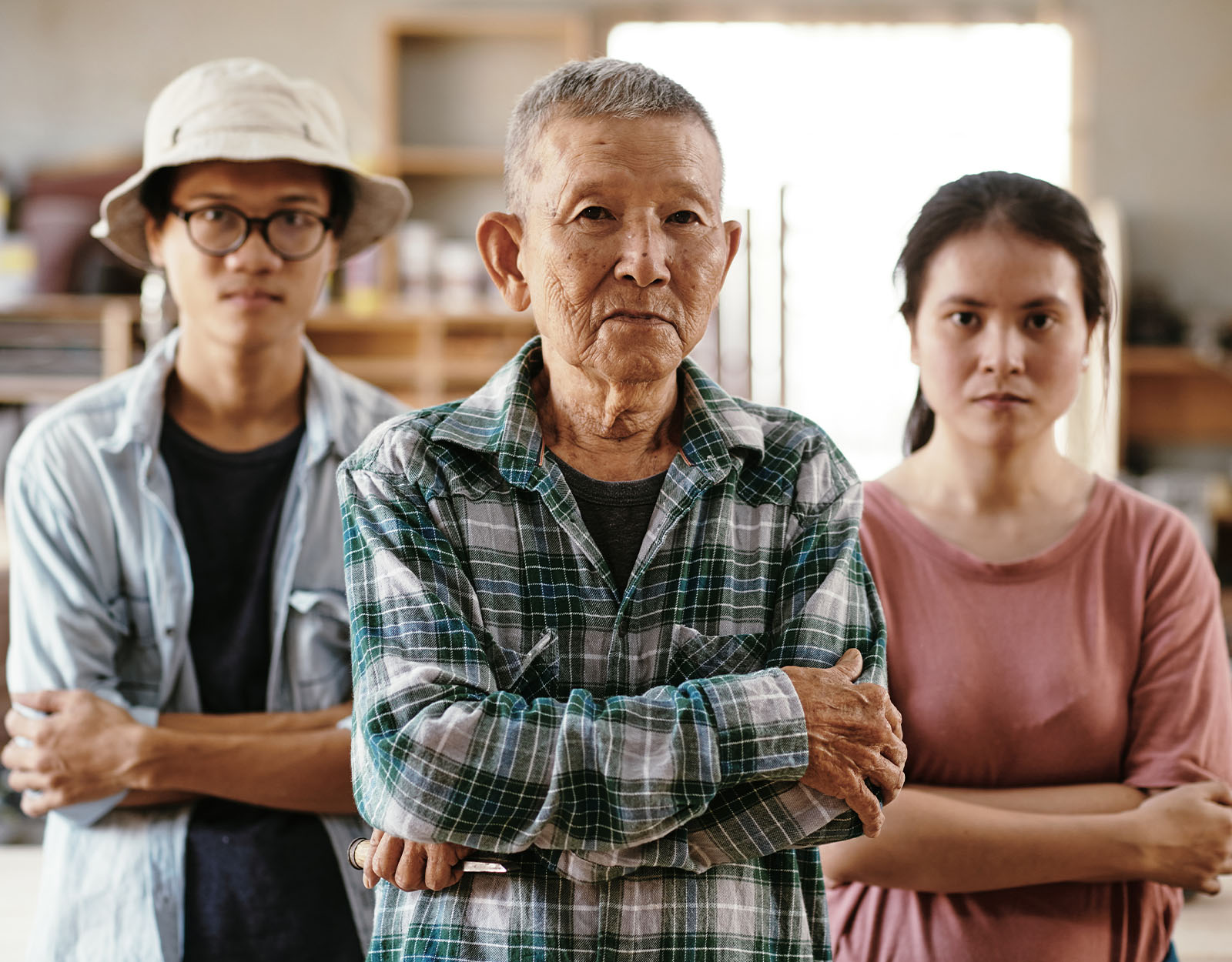Understanding What is “Toxic” in Filipino Family Culture
“Toxic” is a word that is loosely used to describe some aspects of Filipino culture, but it actually calls out behaviors that are distressing yet accepted as a norm.
Many members of the younger generation of Filipinos are quick to call out what makes Filipino family culture toxic. However, some of these instances include virtues that Filipinos are often proud of such as utang na loob and even hospitality—which some schools of thought will argue is a form of people pleasing.
Some common toxic practices found in Filipino culture include borrowing money from family members and never returning it. Parents, or at least more traditional ones, rely on shouting and yelling, which slowly turns into verbal abuse—a harsh talking-to that is hardly constructive. Denying a person accountability to preserve the family’s peace is another.
But where can we draw the line between what is toxic and what is virtuous in our culture?

Understanding Filipino Culture: Comparing Three Time Periods
To fully understand Filipino culture and see where it became toxic, we’ll have to compare three periods: the precolonial era when we all lived as tribes; the colonial era where the Spanish made us their colony for the next 333 years, followed by the 48 years under American rule, and the 4 years under the Japanese; and finally: the modern-day time where technology is the new tool and weapon of choice.
Precolonial Era: A Time Where Filipino Families Worked With Nature
During the precolonial era, Filipino culture was more of a mix than a single entity because of the multiple indigenous tribes that co-existed.
Each tribe had its approach, language, and perspectives that depended on their environment. The mountains, the waters, and even the forests—to the Filipinos—all had spirits. This belief is why they practiced animism, which eventually became the virtue of love for the environment (Almocera, 2000).
But love for nature also made them fear how much destruction it could bring. Thus, to ensure their survival, many of the Filipino tribes intermarried with one another, which led to the virtue of kapwa (Suazo, 2006; Reyes, 2015). They would intermarry, believing that there was survival in numbers as they pooled their resources together to withstand natural disasters or wars with rival tribes.
Colonial Era: The Muddiest Part of Filipino Family Culture and Identity
The muddiest and perhaps bloodiest part of Filipino family culture—which possibly is where most of our “toxic” behaviors came from also—was the colonial era. Why? It was primarily due to the colonizers’ cultures clashing.
The Spaniards influenced us the most. Besides surname choices, their use of religion as the basis for parenting and discipline still exists as a common rationale for corporal punishment (Root, 2008; Jocson, Alampay, and Lansford, 2012; Sanapo, 2012; Herrera, 2015).
Unlike in precolonial times, where families focused on survival against natural elements, Filipinos fought for social survival in the colonial era. Technology, in a way, had begun to neutralize some threats—but it was through politics and connections that families could survive and thrive. And while making friends was a good thing, not all friendships were based on authentic motives. This worsened the already muddy padrino system which originally was based on building alliances with the datus of the various tribes.
Whether consciously or unconsciously, Filipino families reinforce the system with existing biases. Why else would older Filipinos demand the younger Filipinos to pay respects to a relative who calls them “fat” or criticizes their relationship and preferences? Yes, it’s considered toxic, but so long as that relative has power, there’s a wish to curry favor with them (Gripaldo, 2015).
When the Spaniards and Japanese left, the American influence further reinforced a standardized education system—which is why Filipinos often heavily emphasize grades and executive function, rather than character. There’s also an existing debate on what it means to be truly grade-conscious among Filipinos: some will argue that grades are a show of character, while others say that it’s not enough.

Modern-Day Time: Technology as an Agent of Change
Filipino values may have not changed since then but, the pace of the world has changed because of technology. The internet sped up globalization—people can now exchange information with a press of a button and use it to present their side of the story. It’s easy to hear news from one country or another, thus leaving it open to discussion (Lee, Baring, Maria, and Reysen, 2017; Benitez, 2022).
With that, TikTok, X (formerly known as Twitter), Facebook, Reddit, and various social media platforms, people can quickly ask if a certain practice in Filipino culture is toxic or not (Lanuza, 2003).
But because of technology, toxicity isn’t just referring to emotionally distressing cultural practices. In fact, they can even be considered obsolete. This is why younger Filipino generations condemn certain practices from their culture, such as utang na loob because it’s what created the padrino system and finally, corruption.
But how does this involve Filipino families?
Whether Filipino or a different nationality, the family is the first window a child has to society. Although Filipino families can share the same beliefs and practices with other cultures, it’s how these traditions and beliefs are practiced that makes them toxic. One such practice is when family members always ask their relatives who are Overseas Filipino Workers (OFWs) for money, treating them as a walking “ATM” (Pineda-Ofreneo, 1991; Jalagat and Dalluay, 2016).
Moreover, the precolonial tribe mentality of pooling resources shows in this practice and technology just makes it easier: by reducing face-to-face contact, it makes them [the borrowers] less aware of the person’s [their potential lender’s] feelings.
Filipinos believe as a family that resources should be shared. It would have been fine if only once or twice and paid back but, in most cases, the debt in question is swept under the rug because they’re family and it’s a shared resource. However, younger generations and OFWs have often called it toxic—sharing that those who borrow are not aware of the higher standards of living where they work (Manapol, Lopez, and Sobrejuanite, 2022).
Another common toxic behavior that Filipinos accept as a norm in their culture is public confrontation. Whenever a child makes a mistake, most Filipino parents scold or call out their behaviors in public—even if they don’t like it when they’re on the receiving end. But instead of physically disciplining the child, they resort to verbal tactics, as they are subconsciously aware that hitting the child in public would also affect their image (Loh, Calleja, and Restubog, 2011).
What Makes Aspects of Filipino Family Culture Toxic: Outdated
Call it a generational gap, but some of the aspects and reasonings behind certain cultural practices in Filipino family culture become toxic because they no longer fit the current situation. What’s emotionally distressing is not just the act—but the sight of how disconnected the people who enforce these practices behave.
And for those who call out these toxic behaviors—which Filipino culture deems normal—it’s not a direct attack on the culture and character of Filipinos, but it’s more of a wake-up call to readjust, re-examine, and even change the way Philippine tradition can better suit the times.
But when calling out someone, it’s also the responsibility of both sides to communicate and assure one another that their disagreement is a learning experience for both. Otherwise, the lesson remains unlearned.
References:
Almocera, R. (2000). Popular Filipino Spirit-World Beliefs, With a Proposed Theological Response. Journal of Asia Adventist Seminary, 3(1), 3-23.
Benitez, J. L. (2022). An inquiry into the problems concerning Filipino values and norms. Recoletos Multidisciplinary Research Journal, 10(1), 39-50.
Gripaldo, R. M. (2015). Cultural Traditions, the Person, and Contemporary Change: The Philippine Experience (2005, 2014). www.academia.edu. https://www.academia.edu/9649352/Cultural_Traditions_the_Person_and_Contemporary_Change_The_Philippine_Experience_2005_2014_
Herrera, D. R. (2015). An Overview of the Colonial Era. Education about ASIA, 20(1).
Jalagat Jr, R. C., & Dalluay, V. S. (2016). Managing Financial Resources: A Never Ending Challenge to Overseas Filipino Workers (OFWs). Global Journal of Advance Research, 3, 1031-1037.
Jocson, R. M., Alampay, L. P., & Lansford, J. E. (2012). Predicting Filipino mothers’ and fathers’ reported use of corporal punishment from education, authoritarian attitudes, and endorsement of corporal punishment. International Journal of Behavioral Development, 36(2), 137-145.
Lanuza, G. (2003). The mediatization of Filipino youth culture. Global Media Journal, 2(3).
Lee, R. B., Baring, R., Maria, M. S., & Reysen, S. (2017). Attitude towards technology, social media usage and grade‐point average as predictors of global citizenship identification in Filipino University Students. International Journal of Psychology, 52(3), 213-219.
Additional references:
Loh, J., Calleja, F., & Restubog, S. L. D. (2011). Words that hurt: A qualitative study of s parental verbal abuse in the philippines. Journal of interpersonal violence, 26(11), 2244-2263.
Manapol, M. L., Lopez, S. R., & Sobrejuanite, M. V. E. (2022). Saving and Spending Habits of Overseas Filipino Workers (OFWs) and Their Families in Region Xi, Philippines. Asean Social Work Journal, 59-71.
Mulder, N. (2013). Filipino identity: The haunting question. Journal of Current Southeast Asian Affairs, 32(1), 55-80.
Pineda-Ofreneo, R. (1991). The Philippines: debt and poverty. Oxfam GB.
Reyes, J. (2015). Loob and kapwa: An introduction to a Filipino virtue ethics. Asian philosophy, 25(2), 148-171.
Root, M. P. (2005). Filipino families. Ethnicity and family therapy, 319-331.
Sanapo, M. S. (2012). What Filipino Mothers Say: Disciplinary Practices of Mothers in Rural Philippines.
Suazo, R. (2006) Re-Inventing the Filipino Value of the Family: Revisiting the Significance of Knowing the Filipino Identity.
More real talk about toxic behaviors in Filipino culture?
How Utang na Loob Made Filipino Families Toxic
Guilt Trip: A Common Toxic Tactic in Filipino Families
OFW Families: Why They Migrate And What Happens After?









